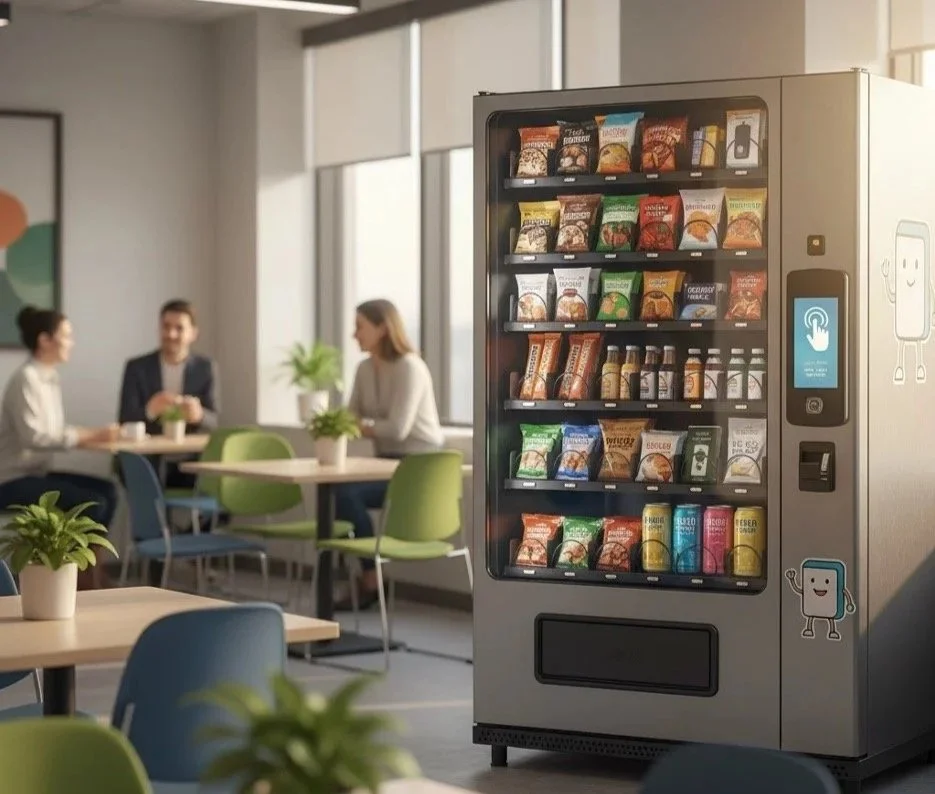Overlooked Challenges: Why a Narrow Product Offering at Launch Can Hold You Back
What happened: Picture this, you've just launched your shiny new vending operation, machines humming with mechanical pride, stocked to the brim with the holy trinity of vending defaults.
Chips, candy, and soda. Classic move, right? Easy to source, familiar to customers, can't go wrong!
Well, plot twist incoming.
Our initial stock was heavily tilted toward traditional vending fare, the same lineup you'd find in practically every machine from here to Timbuktu. We're talking your garden-variety Doritos, Snickers, and Coca-Cola parade. Sure, these items practically sell themselves, but here's the kicker: so does everyone else's identical selection.
It didn't take long before we realized we'd painted ourselves into a pretty beige corner. While we were busy congratulating ourselves on our "safe" product choices, the market was practically screaming for something different.
The Great Awakening: When "Safe" Becomes Stale
The lightbulb moment came during our second month of operations. We were sitting in a corporate office break room, talking to the manager asking why he only bought one particular product. That's when he dropped the truth bomb: "I'd love to grab other stuff but I'm diabetic, and there's literally nothing I can eat."
BAM! There it was, our narrow product offering wasn't just limiting our sales; it was actively excluding potential customers.
We started paying attention to what people were actually saying (revolutionary concept, we know). The feedback rolled in:
"Do you have anything gluten-free?"
"I wish there were protein bars in there."
"I’m diabetic."
"Any chance you could stock some of those coffee drinks?"
Suddenly, our "comprehensive" vending selection felt about as diverse as a mayonnaise sandwich convention.
The Domino Effect: How Narrow Thinking Narrows Profits
Here's where things got interesting (and by interesting, we mean financially uncomfortable). Our limited product range created a cascade of challenges we never saw coming:
Limited Sales Growth = Limited Dreams
When you're only appealing to the "traditional vending customer," you're basically fighting over the same small piece of pie instead of baking a bigger pie. While our competitors were slugging it out over who had the crunchiest chips, we could have been cornering the market on diabetic-friendly snacks, premium jerky, or even those wild energy shots that cost $4 but somehow people love paying for.
Playing Catch-Up with Planograms
Instead of leading the market with variety, we found ourselves frantically redesigning our planograms (that's fancy vending talk for "how we arrange products in the machine") to accommodate all the items we should have stocked from day one.
Picture this: You're trying to retrofit a Honda Civic to haul furniture when you could have just bought a pickup truck in the first place. Not impossible, but definitely not efficient.
The Plot Thickens: What We Were Missing
Once we started expanding our horizons, the possibilities were mind-blowing. Here's what we discovered lurking beyond the chip-and-candy wasteland.
Healthier Options That Actually Sell
Protein bars (turns out people will pay premium prices for these magical rectangles)
Trail mix (nature's candy, but with more street cred)
Baked chips (for when you want to feel virtuous while still crunching)
Organic sodas (because regular soda is apparently so last decade)
Diabetic-Friendly Snacks
This market segment is huge and surprisingly underserved. Sugar-free options, nuts, jerky, and specialty items that won't send blood glucose levels on a roller coaster ride. Janet from accounting became our biggest fan overnight.
Novelty Items That Surprised Everyone
OTC medications (because nothing says convenience like grabbing Advil with your afternoon snack)
Energy shots (tiny bottles, massive profits, what's not to love?)
Premium jerky (apparently, people have opinions about their dried meat)
Phone chargers (because dead batteries are the modern equivalent of being stranded in the desert)
The Wild Card: Unconventional Offerings
Here's where we really went off-script. 3D printed items? Yep, we tried it. Custom phone cases, small gadgets, even replacement parts. Not every experiment worked, but the ones that did were pure gold.
The Reality Check: Impact Assessment
Let's talk numbers, because numbers don't lie (unlike that time we convinced ourselves that stocking 47 different flavors of the same chip brand was "variety").
Limited sales growth wasn't just a minor inconvenience, it was a full-blown growth strangler. While locations with diversified offerings were seeing 30-40% higher sales, our traditional setups were stuck in neutral, watching opportunity drive past like a food truck they couldn't catch.
Missed opportunities weren't just about the locations that said no; they were about the customers who walked past our machines every single day because we had nothing they wanted. Painful.
The planogram catch-up game became our unwelcome full-time job. Instead of focusing on expansion and optimization, we were constantly reorganizing, restocking, and trying to squeeze square pegs (new products) into round holes (machines designed for standard fare).
The Lesson That Changed Everything
Here's the big takeaway that would have saved us months of headaches and probably a few gray hairs: Start with a market-driven, differentiated product mix tailored to each location rather than relying on the vending industry "default set."
Revolutionary? Maybe not. Effective? Absolutely.
Location, Location, Personalization
Every location has its own personality, demographics, and needs. That corporate law firm? They might love premium coffee pods and stress-relief supplements. The college campus? Energy drinks and late-night study snacks. The medical center? Healthy options and allergen-free choices.
One size fits none when it comes to vending success.
Differentiation = Dollar Signs
When everyone else is playing it safe with the same boring lineup, being different isn't just refreshing, it's profitable. Premium products command premium prices, and unique offerings create customer loyalty that standard fare simply can't match.
Your Action Plan: Avoiding the Narrow Trap
Ready to skip the mistakes we made? Here's your roadmap:
1. Research Before You Stock
Survey your target locations before filling those machines. What do people actually want? What can't they find elsewhere?
2. Diversify Strategically
Mix traditional items with healthier options, novelty products, and location-specific choices. Think 60% proven sellers, 40% experimental differentiation.
3. Plan for Flexibility
Design your operations to accommodate different product types from the start. Trust us, retrofitting is a pain you don't want to experience.
4. Listen and Adapt
Your customers will tell you exactly what they want, if you're paying attention. Make it easy for them to provide feedback and actually use it.
Looking back, our narrow product offering wasn't just a missed opportunity, it was a masterclass in leaving money on the table. But hey, every mistake is a learning opportunity, and we've definitely learned enough to write the book on what not to do!
Ready to avoid our early mistakes and build a vending operation that actually serves your market? Check out our other insights on creating profitable, customer-focused vending solutions that go way beyond chips and soda.
Because life's too short for boring vending machines, and your profits are too important for narrow thinking.































